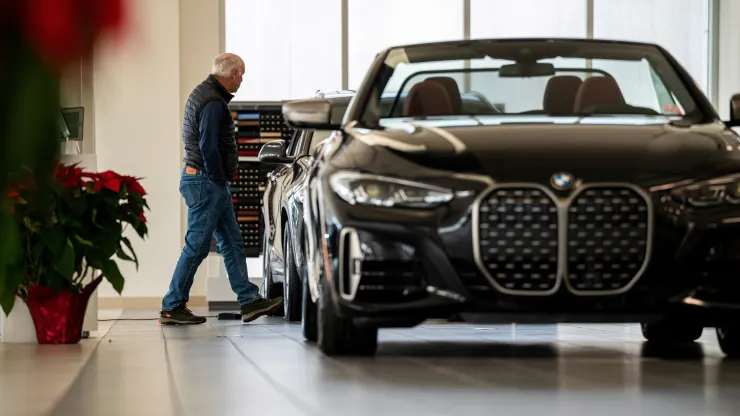
Financing a new or used car is more expensive than ever, new research shows.
Amid rising interest rates and elevated auto prices, the share of new car buyers with a monthly payment of more than $1,000 jumped to a record high, according to Edmunds. For the first time, just over 15% of consumers who financed a new car in the fourth quarter of 2022 committed to a monthly payment of $1,000 or more — the highest level on record — compared with 10.5% one year ago, Edmunds found.
The average price paid for a new car in December set a record of $46,382, according to a separate estimate from J.D. Power and LMC Automotive. While there are signs the market is cooling, sticker prices are up 2.5% from a year ago.
At the same time, the interest rate on new car loans reached 6.5%, up from 4.1% a year earlier, Edmunds data shows. As the Federal Reserve continues to raise interest rates to combat persisting inflation, auto loan rates could tick even higher, although consumers with higher credit scores may be able to secure better loan terms.
“Elevated pricing coupled with repeated interest rate increases continue to inflate monthly loan payments,” Thomas King, president of the data and analytics division at J.D. Power, said in a statement.
Now, more consumers face monthly payments that they likely cannot afford, according to Ivan Drury, Edmunds’ director of insights. Car buyers are hit with “shock and awe” as high prices and rising rates cause monthly payments to balloon, he said.
“Sticker shock doesn’t begin to describe it,” Drury said. “When you factor in the financing, it’s very jarring.”
Many Americans are also choosing more expensive SUVs and pickups with all the bells and whistles, he added, which can cost 30% more than the base price.
“Base models, while enticing in theory, rarely hit the street,” Drury said, cautioning car shoppers to ask themselves if they’re “buying too much car.”
“There could be a perfectly good substitute at about half the cost,” he added.
It’s the ‘tip of the negative equity iceberg’
Shelling out more to finance a car today puts car buyers at greater risk of going underwater on those loans down the road as used car values decline, Drury cautioned.
“At the onset of the pandemic, consumers benefited from low interest rates and elevated trade-in values, helping shield even the more questionable financing decisions from resulting in negative equity,” he said.
“But as we shifted toward an environment with diminished used car values and rising interest rates over the past few months, consumers have become less insulated from those riskier loan decisions, and we are only seeing the tip of the negative equity iceberg.”





























